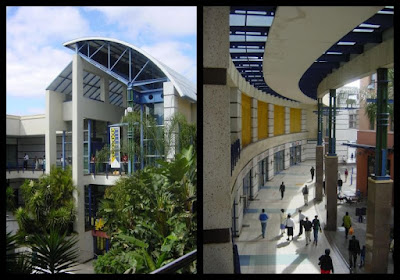Architectural practices evolve.
Often they start as two young architects with complementary skills and a shared
vision. As they get older, they often take a younger, energetic designer into
the partnership to extend the life of the practice into their old age.
You can trace this process in the name changes of
registered practices. In Zimbabwe, "Harvey Bufe" became "Harvey
Bufe Mwamuka," then "Mwamuka Mercuri." This third alliance gave
them strong connections in both Harare and Bulawayo as well as the African and
European communities which were sadly far from fully integrated.
I met both partners several times, but I new Vernon Mwamuka best. A year or two before his death in a tragic road accident, he tried to lure me away from Clinton & Evans. We spent a pleasant evening in the Miekles Hotel, drinking whisky on his tab and swapping stories.
One that sticks in my mind tells how he sweet-talked his way into Phillip Johnson's office in New York and built a lasting friendship with that fascinating shape-shifter who straddled the Modernist and Post-Modern eras. Vernon was a charmer to be sure, and Johnson's influence is evident in his early work.
The pictures here are from 2002 when I spent a week in Bulawayo as a guest lecturer. Firstly the NUST campus itself, (which I believe was a collaboration with an American concept architect) and then the Bulawayo Centre, in a similar colourful style with a nod in the Post Modern direction.
Vernon died in a head-on collision, driving his Mercedes back from Bulawayo one night. He was one of those bright flames that outshone the rest but flickered out too soon. Surely the most commercially successful of the first generation of black Zimbabwean architects.
The top of one of my bookshelves.
The matchbox shapes have been there for more than a year now. Revisiting a
teaching aid I developed 40 years ago. The woven fan is from my Xmas in
Thailand just 3 months ago.
That brings us to two art works rescued from my house
in Zimbabwe. Both by my Dad, who was an art teacher. I had quite forgotten
about the chunky clay figurine of a seated woman, finished with a translucent
milky glaze. It's such a tactile evocation of the maiden great-aunts who I knew
as a teenager when this was made.
The picture in the background is a preliminary sketch
for a larger picture. It dates from my early childhood in Barnsley. BBCS
buildings in the background and some kind of travelling fairground at the front
I think.
Barnsley British Cooperative Society was a major player
in the retail space at one time. Theoretically a self-help movement in the
working class community I grew up in, based primarily on coal mining. The coal
mines disappeared completely but "the Coop" lingers on in a very different
form.




No comments:
Post a Comment
I've been getting a lot of spam so had to tighten up comments permissions. Sorry for any inconvenience. I do like to hear from real people